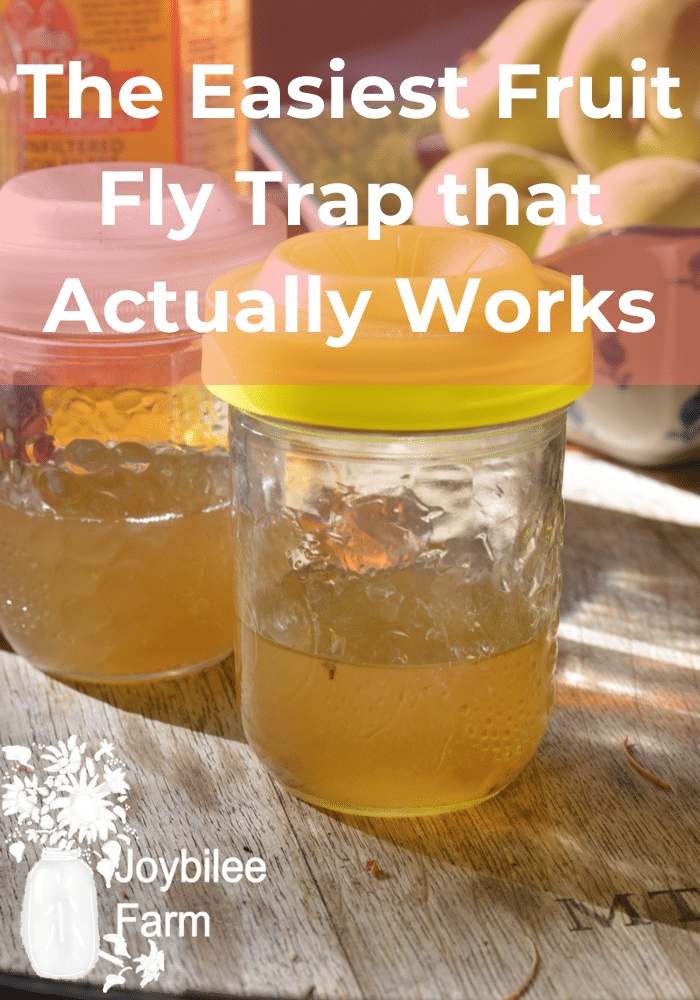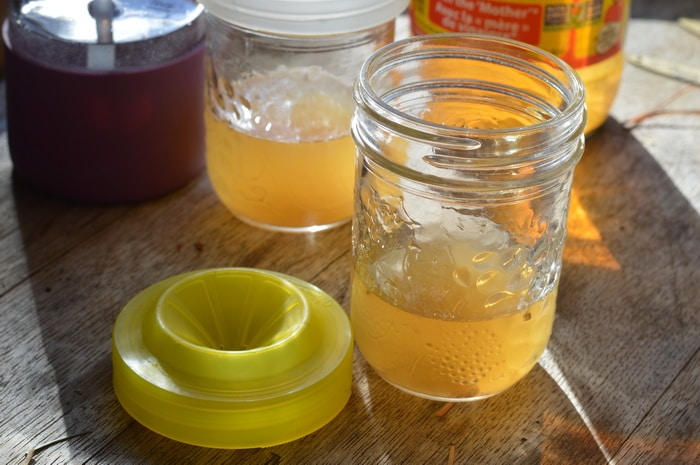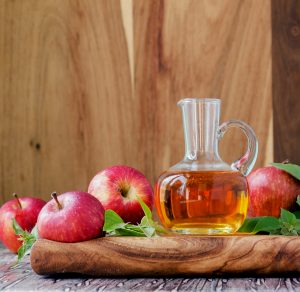Fruit flies can be the bane of canning and dehydrating processes during summer and autumn food preservation stints. Make this easy fruit fly trap and catch the tiny insects before they attempt to take over the kitchen.
This week I went on a road trip with my friend and brought home 80 pounds of peaches. That’s a lot of peaches, yes. Following the “rule of 3” I spoke about a few weeks ago, I wanted to have some for canning, some for dehydrating, and some for freeze drying. This will give me peaches in our pantry for 1 year, 2 to 3 years, and 15 to 20 years, respectively — though they’ll be eaten sooner than that!
In other year’s I’ve put some in the freezer, but after last year’s freezer fiasco, I’m looking for shelf stable ways to preserve fruit this year. If you make a lot of smoothies, a few pounds of frozen peaches can give a lot of smoothies. However, I prefer avoiding putting too much produce in the freezer now, only what I’ll use up within three months or so. As I prefer blueberries in smoothies, the peaches are being preserved in other ways.
What I did with 80 pounds of peaches
I canned (water bath) 20 pounds in pint jars with vanilla bean syrup. Another 20 pounds I canned in light syrup, for my daughter, who just isn’t getting around to it with her teething baby. I put about 10 pounds through the dehydrator (More about drying peaches and how to stop them from going black, here) and the rest I’ve got standing by in the freezer to freeze dry later this week.
Tip: We’re at 2700 feet, so that means extending the water bath times at sea level by 5 minutes. So for peaches canned in pints I processed in the boiling water bath canner for 25 minutes. (Use 20 minutes at sea level).
Dehydrated peaches can seem leathery, but the sweetness and flavor is quite good. They are more like peach candy than dried fruit, and go well as part of trail mix, or just as an on-their-own snack.
Make a fruit fly trap that works
While fruit flies are annoying, they can act as an early warning system that your fruit, or veggies, are starting to get to an over-ripe stage. When I have tomatoes ripening in their basket on the counter, sometimes a few fruit flies showing up will warn me that one of the back, or bottom, tomatoes has started to go soft and I can process the ripe tomatoes before too many go bad. But, when doing a lot of peeling and slicing, they can get overwhelming as the peels start to ferment and attract them.

When you’re processing fruit in the kitchen at this time of year, clouds of fruit flies will descend on your joy. But there is a way to overcome them. These easy fruit fly traps have never failed me. To make them you’ll need just three things — some shallow dishes or small jam size jars, apple cider vinegar, and dish soap.
Another name for fruit flies is “vinegar flies”. Because they are attracted to vinegar. Sometimes you can spot fruit flies in the white vinegar dispensers that restaurants used to leave on the table! You can get fancy lids for Mason Jars to make a fruit fly trap, but you don’t need them. (Mason Tops makes them) Just put an inch of cider vinegar or even vinegary kombucha, in a jam jar or shallow dish. Add a drop of two of dish soap to break the surface tension. Walk away. If you’re worried about the dish spilling or a pet getting into it, place it on a shelf out of their reach, or cover with cling wrap with a few holes poked in it. Or, just don’t leave the dish overnight.
The next morning you’ll find fruit flies drowned in your trap. Dump the liquid and refresh the trap every two or three days to keep it working. If you set these traps as soon as you see fruit flies in your kitchen, you’ll get ahead of the nuisance fast.
If you want a more discreet trap the Mason Tops are a great upgrade. You use them the same way, with cider vinegar and a drop of dish soap. Amazon has them. In Canada you can also find them at Lee Valley Tools.
If you don’t have a specific top, you can place the jar inside a small plastic bag, or cover the top with cling wrap with a few holes poked in it. This won’t be quite as effective as the jar specific fruit fly trap tops, but it can work in a pinch if they’re invading the canning or dehydrating space.
Back to You:
How do you deal with fruit flies, or wasps, when doing summer food preservation? Leave a comment!




thanks alot of information